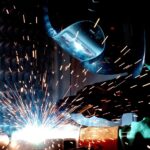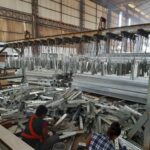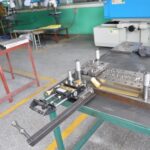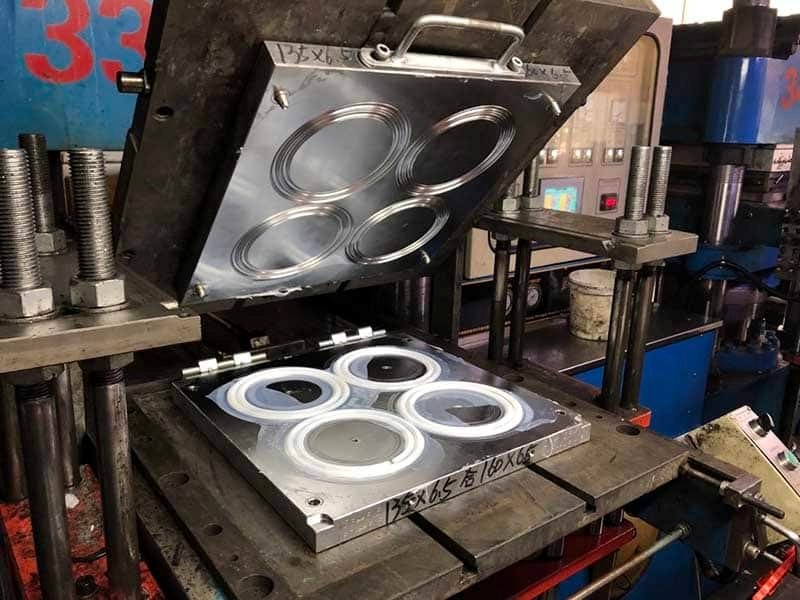
Compression Molding: The Basics and Benefits
Introduction to Compression Molding
Compression molding is a cornerstone technique in rubber manufacturing. It’s simple yet effective, making it ideal for producing high-quality molded rubber parts. In this process, rubber is first measured and then put into a heated mold and then pressure is applied to form the rubber into the required shape. It is one of the most preferred methods by rubber industries due to its effectiveness and versatility.

Just think of the fine rubber t molding in the door seal of your car or the sturdy rubber components used in heavy equipment. These are usually produced through compression molding to guarantee the parts’ strength and accuracy. This technique is especially popular with silicone rubber manufacturers due to the ability to create intricate, high-performance components.
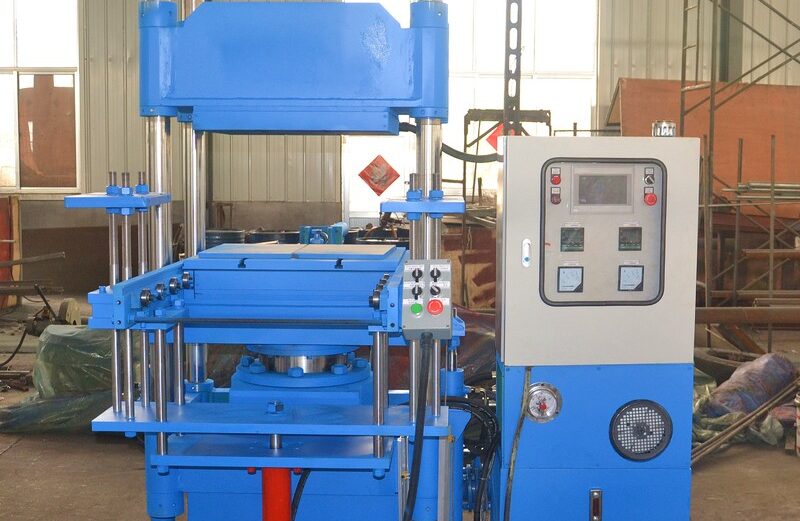
How It Works
Compression molding involves placing raw rubber into a heated mold, which then compresses the material into shape. The heat and pressure ensure the rubber cures properly, resulting in strong, durable molded rubber parts. This method is particularly effective for producing large quantities of consistent, high-quality components.
Temperature and pressure are some of the most critical parameters that need to be controlled in rubber manufacturing. The material must flow evenly into the mold to fill every detail accurately.
Advantages of Compression Molding
Compression molding offers several benefits, including excellent material utilization and cost-efficiency.
- High Quality and Consistency
- Cost-Effectiveness
- Versatility in Material Use
- Design Flexibility
- Enhanced Mechanical Properties
- Efficient Production for Low to Medium Volumes
This flexibility makes it ideal for use in many applications including simple gaskets and other more complex custom rubber molding parts.

Consider a silicone rubber manufacturer producing medical-grade components. Compression molding allows for precise control over the material properties, ensuring the final product meets stringent quality standards. This level of precision and reliability is why many rubber industries rely on compression molding for critical parts.
Compression Molding Machine types
Types of Machines:
- Manual Presses: Operated by hand, suitable for small-scale production and prototyping. They offer greater control over the molding process but are labor-intensive.
- Semi-Automatic Presses: Combine manual and automated features, offering a balance between control and efficiency. Ideal for medium-scale production.
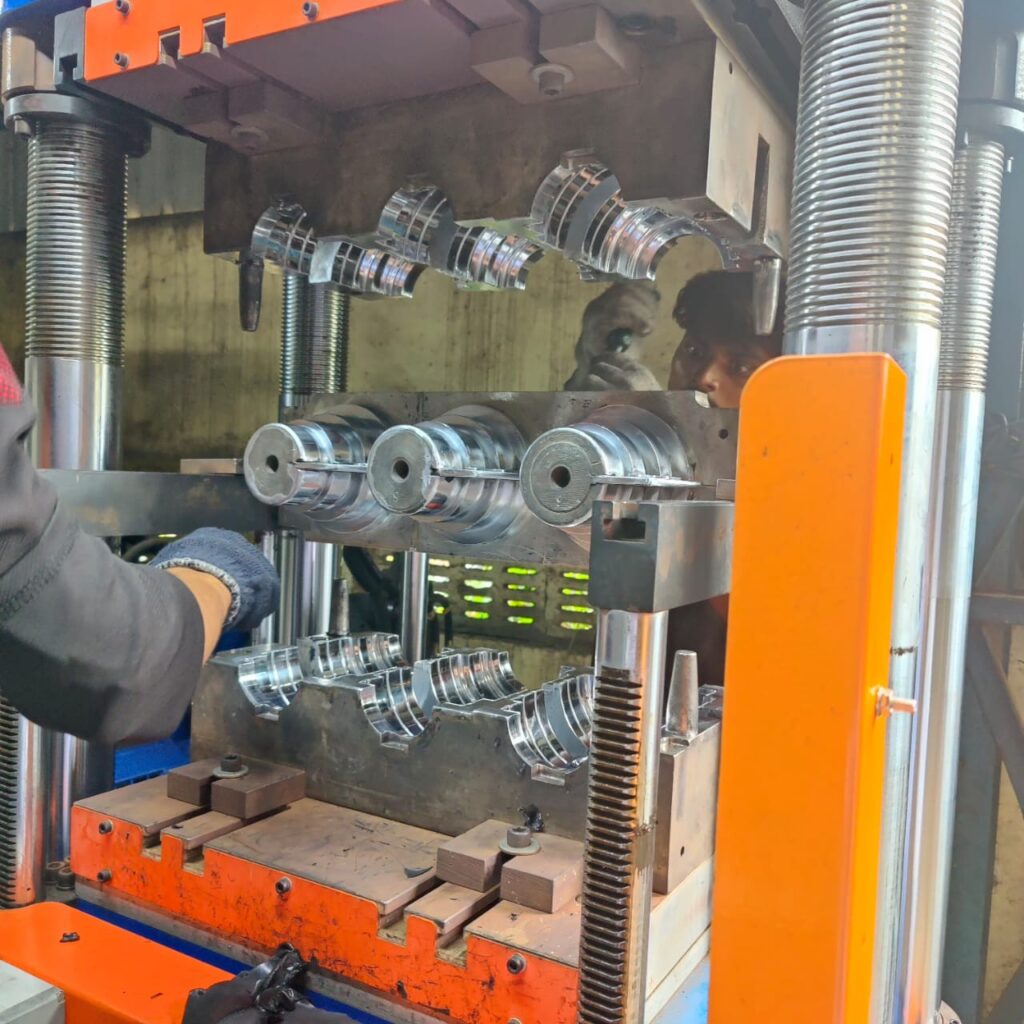
- Fully Automatic Presses: Highly efficient and suitable for large-scale production. These machines automate the entire molding process, from material loading to part ejection.
Design Considerations:
- Flow Channels: Ensure the rubber material flows evenly into the mold cavities, preventing defects like air bubbles and voids.
- Venting: Critical for allowing trapped air to escape during the molding process, ensuring a complete and defect-free part.
- Surface Finish: The interior surface of the mold must be smooth to produce parts with a high-quality finish and precise dimensions.
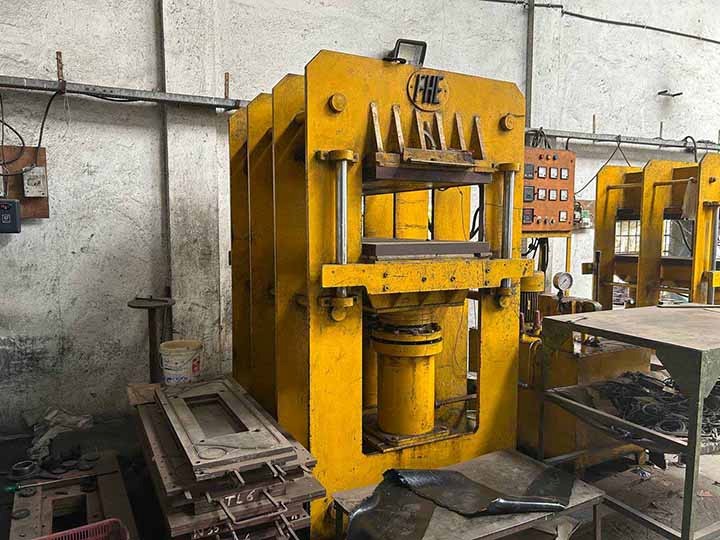
Transfer Molding: Versatility in Design
Transfer molding plays a pivotal role in the realm of rubber manufacturing, offering unparalleled flexibility and precision for crafting intricate molded rubber parts.
Understanding Transfer Molding
Transfer molding represents a specialized process where rubber material undergoes preheating before being forced into a closed mold cavity using a plunger system. This method ensures consistent distribution of material and is particularly advantageous for intricate geometries and detailed features.
Transfer molding in rubber manufacturing is a specific process of molding the rubber material where the rubber material is heated and then injected into a closed mold cavity with the help of plunger system. This process helps in achieving uniform distribution of the material which is very important in achieving the right molded rubber parts especially those that have complex shapes and undercuts.
Transfer molding is best suited for molding rubber parts where there is a need to control the flow and distribution of material. This process ensures uniform material distribution, critical for precise and consistent molded rubber parts, especially those with complex geometries and intricate features.
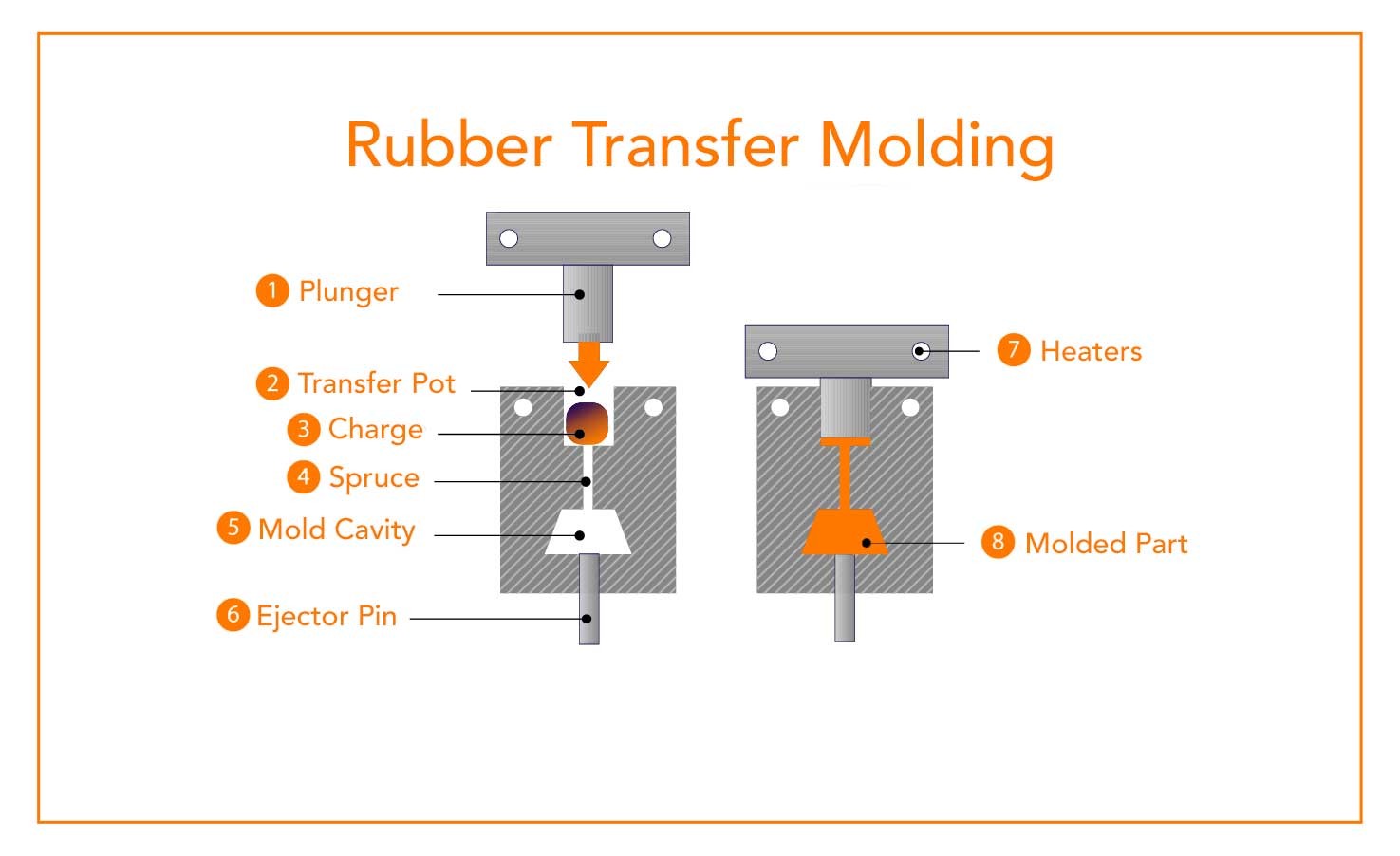
Unlike injection molding, transfer molding often requires longer curing times as rubber remains in the mold cavity until fully cured and solidified. Extended dwell time ensures thorough curing, resulting in parts with excellent dimensional stability and mechanical properties.
Precision in Design: This technique enables the creation of complex shapes and fine details, making it well-suited for applications requiring exacting specifications, such as electronic components and medical devices.
Material Flexibility: Transfer molding supports a wide array of rubber materials, including silicone, EPDM, and natural rubber, each chosen for specific performance characteristics like hardness and chemical resistance.
- Cost Efficiency: By controlling the amount of rubber injected into the mold cavity, transfer molding minimizes material waste, optimizes material usage, and reduces overall production costs.
- Consistent Quality: Precise management of variables such as temperature, pressure, and curing time ensures uniform part dimensions and mechanical properties across production batches.
- Ideal for Medium to High Volumes: Offering a balance between low-volume prototyping and high-volume manufacturing, transfer molding is ideal for batch production of rubber components across diverse industries.
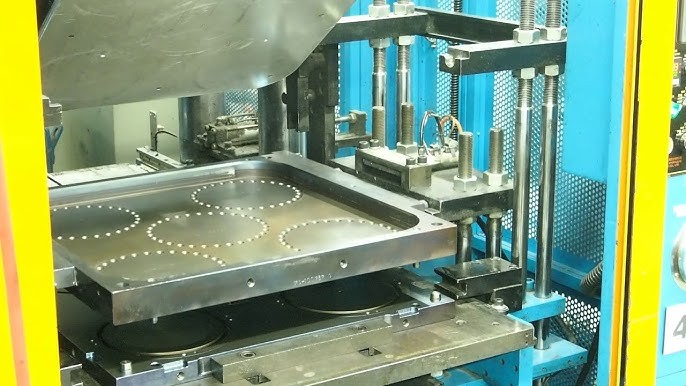
Technical Dos and Don’ts
Dos:
- Select the Right Material: Choose rubber compounds based on specific application requirements, considering factors like temperature range, chemical resistance, and mechanical strength.
- Optimize Mold Design: Design molds with effective venting, gating systems, and cavity geometry to facilitate uniform material flow and minimize defects during the molding process.
- Adhere to Standards and Specifications: Follow established industry standards such as ASTM for material properties and performance criteria to ensure product reliability and regulatory compliance.
- Control Process Parameters: Maintain precise control over heating, transfer, and curing parameters to achieve consistent part quality and minimize variability in manufacturing.
- Conduct Rigorous Testing: Perform comprehensive testing, including tensile strength, compression set, and hardness tests, to validate part performance and durability under real-world conditions.
Don’ts:
- Neglect Material Compatibility: Avoid using incompatible rubber compounds that may compromise part integrity or performance in intended applications.
- Neglect Mold Maintenance: Regularly inspect and maintain molds to prevent wear, corrosion, or damage that could affect part quality and production efficiency.
- Skip Prototyping and Validation: Failure to conduct thorough prototyping and testing phases can lead to costly redesigns and delays in product development.
- Ignore Design Considerations: Ensure molds are designed to accommodate the flow characteristics of the chosen rubber material, preventing issues like air traps or incomplete fills.
- Disregard Safety and Environmental Standards: Non-compliance with safety regulations or environmental standards can lead to legal repercussions and reputational harm.
Injection Molding: Efficiency and Precision
Injection molding in rubber manufacturing starts with injecting molten rubber into a closed mold cavity under high pressure, crucial for replicating intricate details in final parts.
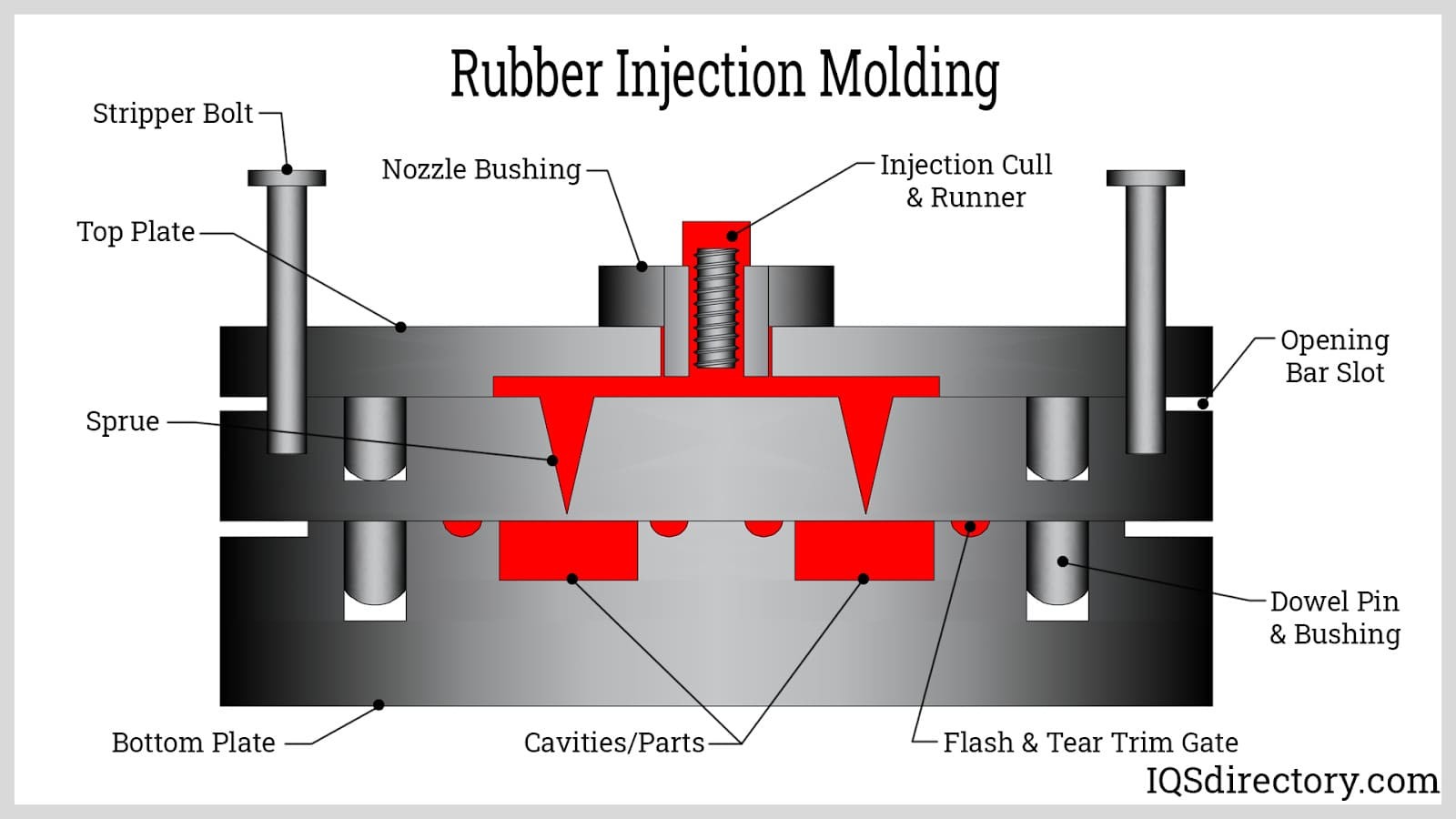
High pressure ensures even rubber distribution, maintaining consistent dimensions and properties across automotive, aerospace, and consumer goods industries.
Injection molding minimizes post-processing, yielding parts with smooth surfaces and precise dimensions, reducing additional finishing steps and costs. Machines control injection pressure, temperature, and cooling to prevent defects like air traps, ensuring consistent, high-quality parts.
In summary, injection molding’s speed, precision, and efficiency make it pivotal for intricate designs and tight tolerances in rubber manufacturing industries.
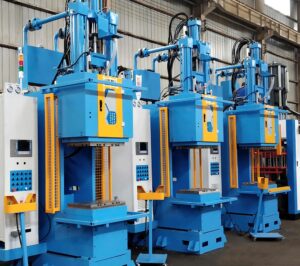
Advantages of Injection Molding
- High Efficiency: Injection molding excels in high-volume production, capable of producing large quantities of identical parts quickly and consistently.
- Precision Engineering: With tight tolerances achievable, injection molding meets exacting specifications demanded by industries such as automotive, aerospace, and medical.
- Material Versatility: A wide range of rubber materials, from silicone to EPDM, can be used, each selected for specific mechanical, thermal, or chemical properties.
- Cost-effectiveness: Despite initial setup costs, injection molding reduces per-unit costs through automation, minimal waste, and fast cycle times.
- Complex Geometry: Ideal for parts with intricate geometries, injection molding accommodates features like undercuts, threads, and thin walls with ease.
Extrusion Molding: Continuous Production Advantages
In the ever-changing world of rubber manufacturing, it is not always an easy task to produce molded rubber parts that are of high quality and in equal frequency. Extrusion molding is unique in its ability to produce items non-stop, making it a godsend for anyone looking to increase their efficiency.
Uninterrupted Flow:
In this aspect, extrusion molding stands out from other molding techniques due to its continuous production method. Suppose there is a continuous flow of uncured rubber and it is continuously being forced through the mold and solidifying in the required forms. This kind of flow prevents stop-and-start that is characteristic of other techniques, and leads to very high speeds of molding rubber and considerable time-savings.
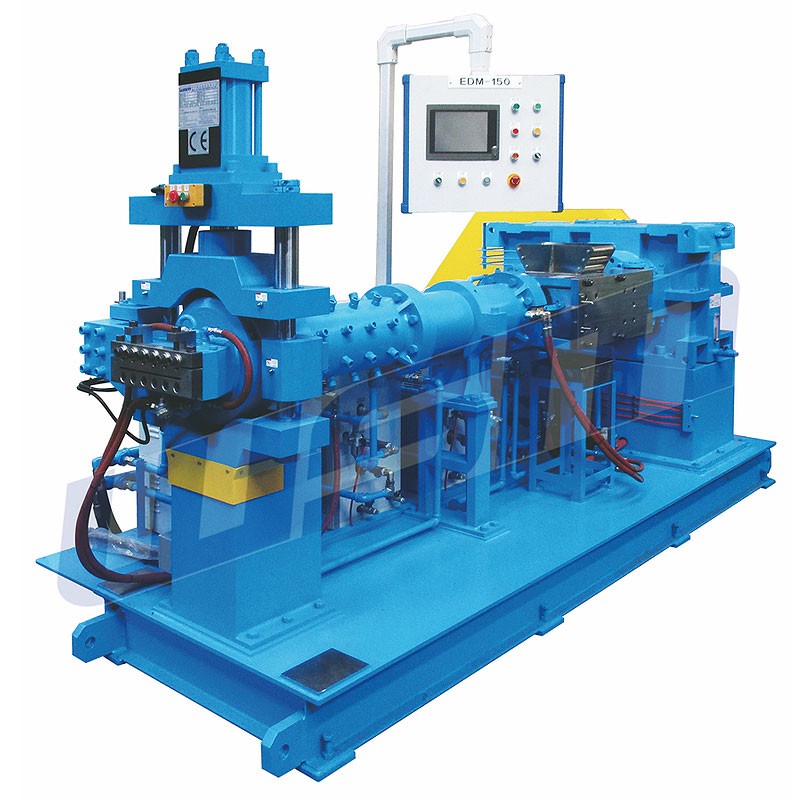
Here’s a closer look at the magic behind extrusion molding:
Feeding Frenzy: The basic material that is used is raw EPDM rubber which is very versatile or other rubber types are fed into a processing oven where they melt and become soft and flexible.
Shaping Up: The softened rubber is then squeezed through a die which is a tool similar to a cookie cutter to give it the profile you want. Just consider weather stripping guards on car windows – those are perfect instances of custom molded rubber trims made by the use of extrusion.
Taking Form, Coiling Up: When the rubber comes out of the die it cools and undergoes vulcanization or hardening to assume the final shape. At times, the extruded rubber may be conveyed through a cooling trough or onto a belt that assists in the solidification of the rubber. Last, the continuously produced molded rubber parts are often wound up for additional processing or stock.
Advantages of Extrusion Molding
- Boosted Efficiency: With no downtime between cycles, extrusion molding cranks up your production output, allowing you to manufacture a higher volume of custom molded rubber parts in a shorter time frame.
- Reduced Labor Costs: Because the process is largely automated, extrusion molding minimizes the need for manual intervention, leading to lower labor costs.
- Consistent Quality: The continuous nature of the process ensures consistent material flow and pressure, resulting in molded rubber parts with uniform properties throughout.
Here are some real-world examples of extruded rubber products you might encounter in your daily life:
- The weather stripping around your car doors and windows (rubber molding trim)
- The flexible hoses that connect your washing machine to the water supply (extruded rubber hoses)
- The grippy treads on your non-slip yoga mat (molded rubber)
- The soft, rubber gaskets that ensure a watertight seal in your kitchen faucet (custom molded rubber parts)
This blog post was an attempt to explain rubber molding, a process that turns raw rubber into the shape you want.
We delved into four prominent techniques:
- Compression molding: suitable for complex and high production of simple components
- Transfer molding: specialized in complex designs
- Injection molding: fast and accurate
- Extrusion molding: suitable for continuous production. Whether you are an EPDM rubber manufacturer or just curious about molding rubber, this guide provides you with a starting point to explore the large world of rubber molding processes.


